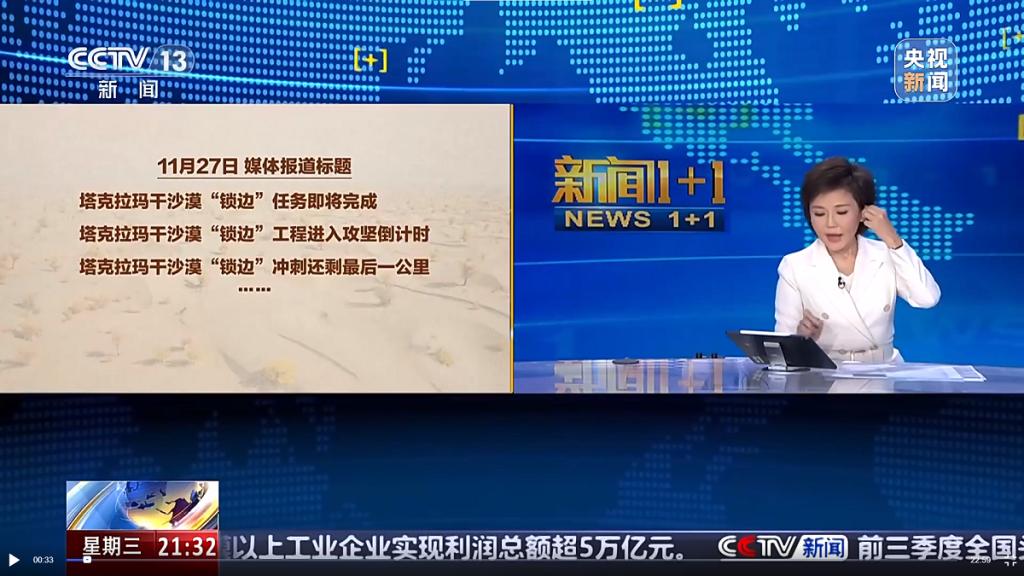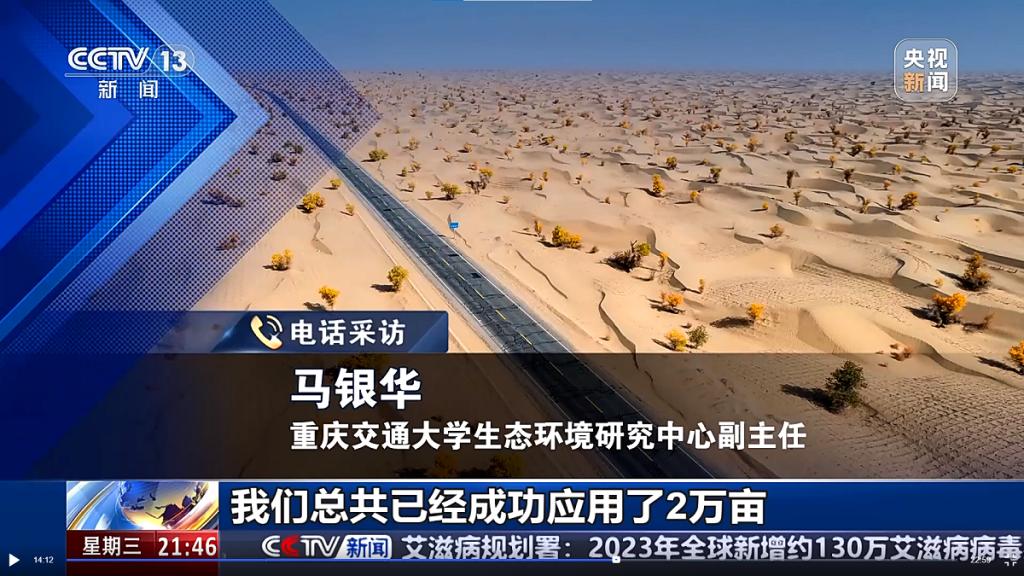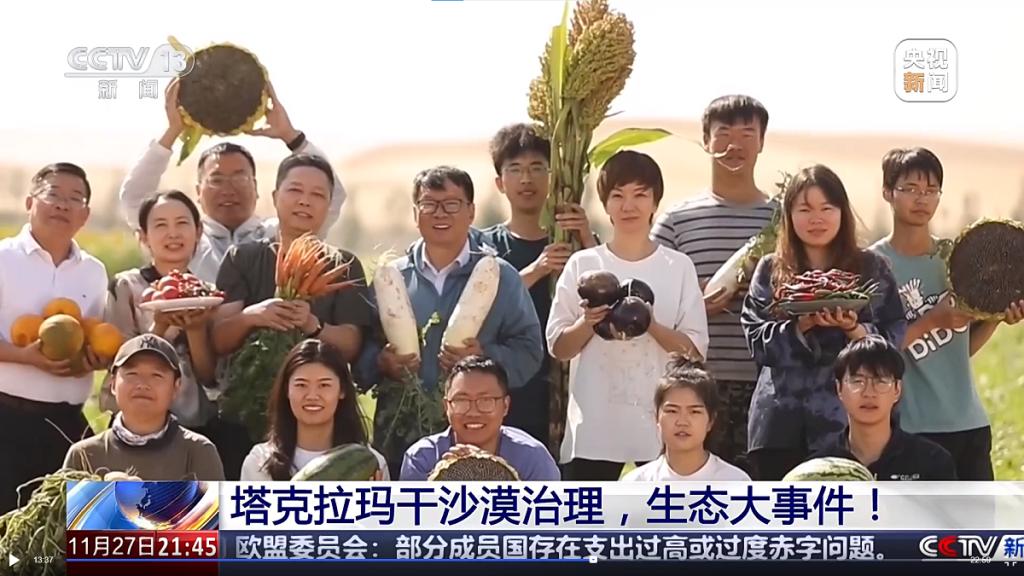Updated: November 27, 2024
CCTV News Channel’s Xinwen 1+1 program featured a report on November 27th titled “Tackling desertification in Taklimakan Desert: A Major Ecological Restoration Milestone!”, highlighting the imminent completion of the Taklimakan Suobian(edge-locking) Project.

Located in the center of the Tarim Basin, the Taklimakan Desert is China’s largest desert, spanning approximately 337,600 square kilometers with a perimeter of 3,046 kilometers.By the end of 2023, more than 40 years of restoration efforts had resulted in the establishment of a 2,761-kilometer sand-fixation barrier. Only a 285-kilometer “gap” remains between the southern edge of the desert and the oases on the southeastern boundary. This final section is now nearing full completion.
CCTV reporters interviewed several participants and witnesses of the Suobian Project, including grassroots cadres, researchers, and local residents, to highlight their arduous efforts and the project’s transformative impact on Xinjiang’s future. Representing the research team, Professor Ma Yinhua from CQJTU’s desert soilization technology team was invited to speak in the interview. During the interview, Professor Ma shared the team’s progress. In 2017, they successfully conducted planting experiments on a 200-mu (approximately 33 acres) soilized desert in Hotan County. The following year, the planting area was expanded to 3,000 mu (approximately 494 acres). In 2019, thanks to the team’s continued efforts, an additional 7,000 mu (approximately 1,156 acres) of soilized desert was covered with vegetation and crops. This year, they established a 10,000-mu (approximately 1,642-acre) industrial demonstration planting base in Hotan.

The theoretical foundation of desert soilization technology lies in mechanics—using mechanical methods to give sand the properties of soil. Since 2017, the team has been advancing research and practical applications along the southwestern part of the Taklimakan Desert. To date, the team has restored a total of 20,000 mu (approximately 3,300 acres) of desert land for ecological recovery and agricultural development along the southwestern fringe of the desert. The drought-resistant local vegetation and crops planted there have thrived with high yields, significantly boosting the region’s livestock industry.
On June 6, 2023, President Xi Jinping presided over a symposium on strengthening the comprehensive prevention and control of desertification and promoting the construction of crucial ecological projects, including the Three-North Shelterbelt Forest Program (TSFP). He emphasized the importance of focusing on key areas and fully implementing TSFP, particularly the restoration of degraded forests and grasslands in areas spanning the Hexi Corridor to the Taklimakan Desert. The Taklimakan Suobian project is a critical component of this initiative.
With substantial state investment, active public participation, and the support of green technologies like desert soilization, the situation in the Taklimakan is shifting from “sand forcing humans to retreat” to “trees forcing sand to retreat” and ultimately toward “harmonious coexistence between people and desert.” This transformation is yielding comprehensive ecological, social, and economic benefits.

Strengthening comprehensive desertification control is vital to China’s ecological security, its development as a global power, and the sustainable future of the Chinese nation. It is a noble endeavor that delivers immediate benefits while securing long-term gains for generations to come. By preventing desertification across generations, we will ultimately build and fortify a green Great Wall.